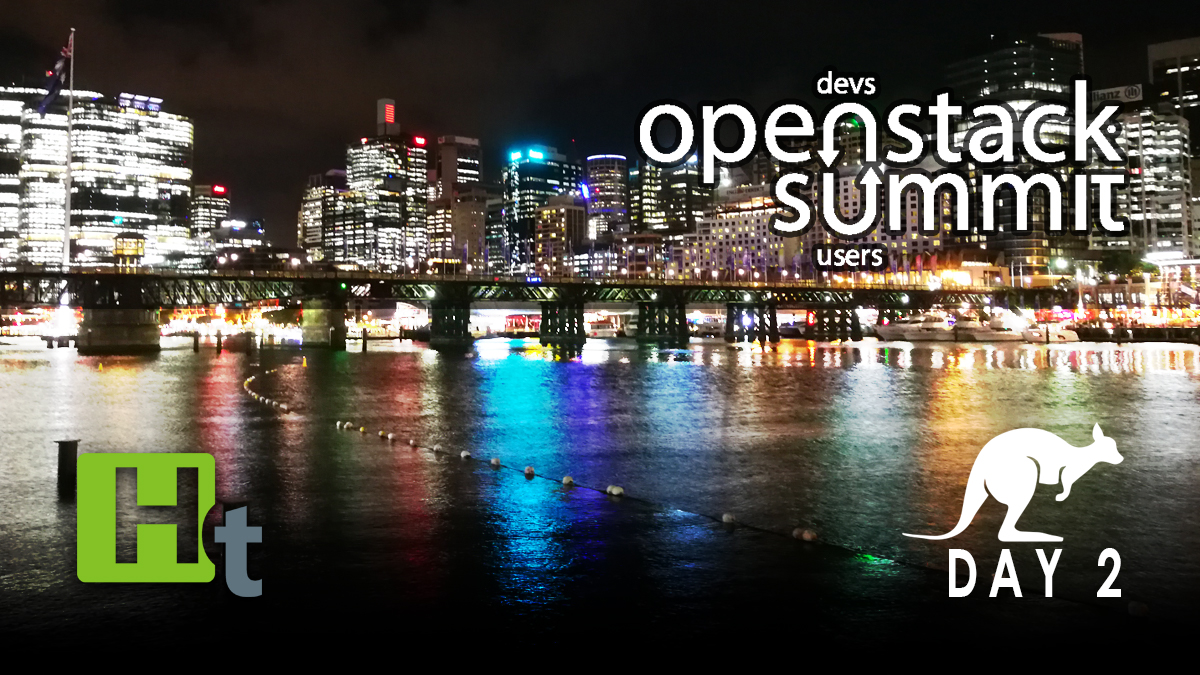We spent a lot of our time yesterday meeting our Summit neighbors and finding out where they’re headed with OpenStack. You can catch up on that news and check out all our broadcasts, blogs, and the new additions anytime. Moving into our second day in Sydney, our coverage extended to chats with analysts, an OpenStack PTL, some industry luminaries, as well as a cool new startup out of Singapore offering a multi-platform cloud management suite that the whole C-Suite can use. First, we turn to the analyst prospective.
What the gurus are saying
We had the great good fortune to catch up with Ben Kepes, the Kiwi industry analyst with prescient insights. While he would never describe himself that way, I enjoyed his take on the maturation of OpenStack as it takes its rightful place as a cloud component in the open source universe. A few years ago, OpenStack was the marketing message of multiple cloud purveyors trying to counter the AWS-takes-over-the-world environment they were competing in. From HP Helion (RIP) to Mirantis, Red Hat, SUSE, and Dell, OpenStack was the word.
Kepes, as well as Forrester analyst Paul Miller, say the OpenStack brand is not a persuasive appeal to a cloud customer base looking for business solutions that are easy to deploy in addition to providing a flexible, powerful platform that is also affordable. While no one disagrees that VMware is an expensive cloud option, OpenStack solutions have no real cachet with customers unless they work and scale easily.
OpenStack Summit environment
At my third OpenStack Summit since 2013, I can certainly see the diminution in sponsor participation as well as attendance. However, the folks who are there are no less keen to share the technology and offer solid user solutions. It’s more that the hype has settled, as perhaps it should have a few years ago, as providers get down to really addressing the practical needs of end-users.
As a child of the Linux generation from the very early 2000s, I am rather happy to see “open source” subsume its OpenStack child into its rightful place as a powerful cloud component instead of it holding court as some sort of independent entity spinning on its own axis. With the development and integration of open source solutions as a whole, the OpenStack platform only becomes more powerful.
It’s interesting, as well, to remember the OpenStack “Big Tent” from a few years ago, when lots of extraneous projects came into play in a rather unwieldy glob that made OpenStack even more difficult for outsiders to decipher. That attitude has changed in favor of greater simplicity and a more straight-forward cloud architecture. If you want to trick OpenStack cloud out with after-market add-ons, that’s strictly a consumer decision. Meanwhile the nitty-gritty work of OpenStack development continues.
I also had the chance to chat with Graham Hayes, OpenStack DNS PTL, who echoed some of Kepes’ and Miller’s observations that OpenStack is no longer the main story, but that platform development continues. While DNS modifications are still baking and the technical details are very much in the realm of high-level geekdom, integration of compute and networking with DNS has a serious view to user adoption.
Did you say Kubernetes?
Yeah, so there sits Kubernetes, except we all know it’s not just sitting there. It’s the orchestration tool OpenStack loves but cannot marry. In a chat with RackN CEO and OpenStack guru Rob Hirschfeld, he talked containers, orchestration, and Digital Rebar, the fast, open data provisioning and control scaffolding with cloud native architecture. His brain is too big for me to encapsulate here, so please go check out our Nov. 7 interview with him to get the full details on his views around automation and orchestration. It’s worth the listen.
Startups from Singapore
I ended the day with a delightful conversation with Glenn Chai from Infinities, a Singapore-based startup offering a platform management suite that delivers development workflow planning to deployment across multi/hybrid clouds. It also incorporates visualized log analytics and functionality through a single user interface that the entire C-Suite can access for the information they need about cloud activity, financial information, and other insights to help run the business. A perfect example of really serving cloud user needs without respect to the underlying infrastructure. More to come tomorrow.
BY
Denise Boehm



Comments